
Comprehensive list of records and explanatory background information
- Subject:
- Life Science
- Zoology
- Material Type:
- Reading
- Date Added:
- 12/12/2018

Comprehensive list of records and explanatory background information
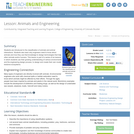
Students are introduced to the classification of animals and animal interactions. Students also learn why engineers need to know about animals and how they use that knowledge to design technologies that help other animals and/or humans. This lesson is part of a series of six lessons in which students use their growing understanding of various environments and the engineering design process, to design and create their own model biodome ecosystems.

I want to teach the kids on different animals and their habitats. But first, I want to start the lesson with the hatching of eggs. Show them what this world has to offer. Then tell them about how humans are treating the earth and how can we fix it in different environments. But first, they need to know the different environments and the animals inside them so they know how to help. They will be assigned a presentation on different animals in the habitats, and at the end, I will be giving a quiz on it.

Hibernation is an ingenious adaptation that some animals employ to survive difficult conditions in winter. This unit examines the differences between hibernation and torpor, and discusses the characteristic signs of hibernation behavior It explores the triggers that bring on hibernation, and whether internal signals or external season cues are predominant. It also examines the physiological adaptations that occur in hibernating animals.

The extreme challenges of life in the polar regions require the animals who make their habitat there to make many adaptations. This unit explores the polar climate and how animals like reindeer, polar bears, penguins, sea life and even humans manage to survive there. It looks at the adaptations to physiological proceses, the environmental effects on diet, activity and fecundity, and contrasts the strategies of aquatic and land-based animals in surviving in this extreme habitat. This unit builds on and develops ideas from two other 'Animals at the extreme' units: The desert environment (S324_1) and Hibernation and torpor (S324_2).
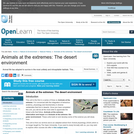
Animal life has adapted to survive in the most unlikely and inhospitable habitats. This unit looks at the surprisingly diverse desert climates throughout the world and mammals, birds, lizards and amphibians that survive there. It splits these animals into three groups according to their strategy for survival: evaders, evaporators and endurers, then discusses how these strategies work on a biochemical and physiological level.
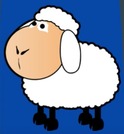
2nd Grades Unit 10 AnimalsOne can use EDPUZZLE to prepare some interactive activities for students. You can click the link below for an example; https://edpuzzle.com/media/64f6ca560712ca401d1d89ee

Explore the Smithsonian National Air and Space Museum's Steven F. Udvar-Hazy Center. Can you find the animal names of our aircraft?
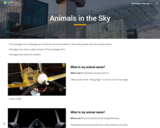
This digital scavenger hunt challenges you to find aircraft at the Steven F. Udvar-Hazy Center that have animal names.

This paper version of our popular scavenger hunt challenges you to find aircraft at the Steven F. Udvar-Hazy Center that have animal names.

In this lesson plan, students will learn about the 12 animals of the Chinese zodiac. In the introductory first lesson, they will see how animals are often used as symbols. In the second lesson, they will hear one of several versions of how the 12 animals were chosen. They will then focus upon a few of the animals in the story and see how they can be used as symbols of certain human characteristics. In the third lesson, they will be introduced to the other animals of the zodiac, and they will be given a chart on which they will assign traits to each animal. Then they will consult a number of websites to find the traits traditionally associated with the animals, which they will add to their list. Then, they will come up with a number of ways to compare and contrast the animals in the list. In the third lesson, they will focus upon the animal associated with the year of their birth, learning about its traits and discussing whether or not these apply to themselves and their peers. Finally, each student will make an acrostic, combining the letters of his or her first name with adjectives that relate to his or her zodiac sign.
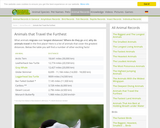
Comprehensive list of records and explanatory background information

Kirsten Lepore is an artist and filmmaker who works with different animation techniques, including stop-motion animation and claymation. With these videos, learn more about the intentions behind her food-focused film, the unusual materials she works with to create her projects, and why she loves the laborious process of stop-motion animation. Lepore also demonstrates the basics of shooting a stop-motion animation film.
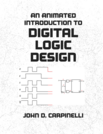
This book is designed for use in an introductory course on digital logic design, typically offered in computer engineering, electrical engineering, computer science, and other related programs. Such a course is usually offered at the sophomore level. This book makes extensive use of animation to illustrate the flow of data within a digital system and to step through some of the procedures used to design and optimize digital circuits.

Students are shown a series of animations in powerpoint. Each powerpoint slide illustrates a basic concept in reflection and refraction (e.g., Snell's law, Crossover distance, Crossover time, dipping layers, multiple interfaces. As the slides are animated, students see the distance versus time relationships. These slides can be given to students so that they can review the concepts as many times as is necessary. Addresses student misconceptions
(Note: this resource was added to OER Commons as part of a batch upload of over 2,200 records. If you notice an issue with the quality of the metadata, please let us know by using the 'report' button and we will flag it for consideration.)
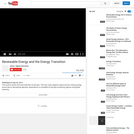
The world is driven by fossil fuels like oil and gas. This has some negative repercussions: Rising energy prices due to decreasing deposits, dependence on unstable oil and gas producing regimes and global warming.
It becomes clear, that a revolution in the way how we produce and use energy is necessary. Central to this energy transition are new technologies, which produce energy from renewable sources such as wind or sun.
With Germany as an example, this clip shows what renewable energies are and how they work as well as what the concept of energy transition means.
The clip is part of the WissensWerte Project of the german non-profit organization /e-politik.de/ e.V.

A team of middle school students in Baton Rouge research global warming and produce their take on the subject in this witty 30-second animated short
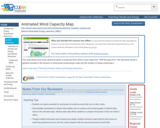
This map shows how much electrical power is produced from wind in each state from 1999 through 2010. The animation shows a general increase in the amount of wind power produced per state and the number of states producing it.

Following the traditional form of the haiku, students publish their own haikus using Animoto, an online web tool that creates slideshows that blend text and music.

In this Animating Civic Action lesson, from the Washington Office of Superintendent of Public Instruction and Washington State Governor's Office of the Education Ombuds, students listen to the story of Jared, a student experiencing homelessness. Students are asked to examine what it means to be homeless, to identify how homelessness affects people and to and to consider ways they can act to take action against homelessness in their school community.